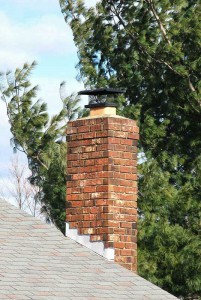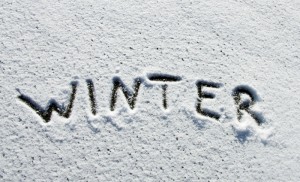
If you live in and around Edina, MN call us!
Since our founding in 1977, we at Jack Pixley Sweeps have been proudly serving our friends and neighbors in the Minneapolis/St. Paul area. After nearly forty years of providing high quality chimney and masonry services, we are proud to announce that we will now serve the Edina, Minnesota area!
We truly enjoy serving the Edina area; our experience with the unique chimney issues with this area make us the right company for all of your fireplace needs!
About us
Founded in 1977, we do our best to not just meet – but to exceed – the expectations of our friends and neighbors in the Twin Cities area. We have made it our mission to provide high quality chimney sweep services that you can trust.
For the past 35 years, our business has been dedicated to being the best in the business. Although Jack Pixley Sweeps isn’t the busiest or the biggest chimney company, our customers continue to use our services year after year for all of their fireplace needs. Our dedication to customer service is what has made Jack Pixley Sweeps “the name you can trust!”
Our services
At Jack Pixley Sweeps, we offer our customers a wide variety of services for the fireplaces and chimneys. While we do offer chimney sweepings and inspections, we can do so much more. We are one of the few companies in the areas that can provide closed circuit camera inspections which can help uncover hidden chimney dangers that cannot otherwise be seen. For homeowners experiencing ongoing issues such as drafts, leaks, or animal entry, we can diagnose the source of the problem and repair it to keep it from happening again.
We also proudly offer masonry services to our customers. Unlike general contractors or handymen, our masons are specifically trained to work with fireplaces and chimneys, leaving you with a product that will last for years to come. Whether your masonry chimney needs minor repairs, a complete rebuild, or you need a new insert installed, Jack Pixley Sweeps is your go to company for masonry issues in the Edina area!
In addition to our fireplace and chimney services, we also offer dryer vent cleaning. If your dryer is not working the way it used to, consider having the dryer vents cleaned before spending hundreds of dollars on a new appliance. Oftentimes, your old dryer’s performance can return to normal just by having the vents cleaned!
Our service area
Jack Pixley Sweeps is based out of Andover, Minnesota and are proud to provide chimney services for many areas surrounding the Minneapolis/St. Paul area. Some of the counties we serve include Sherburne, Anoka, Isanti, Carver, Scott, Dakota, Washington, Ramsey, Hennepin, and parts of Stearns, Chisago, and Wright Counties. A full list of the counties, cities, and zip codes we serve can be found here. If you don’t see your zip code listed, give us a call!
If your masonry or chimney needs cleaning or maintenance, contact Jack Pixley Sweeps today. We pride ourselves on providing our friends and neighbors in Minnesota high quality and trustworthy chimney and masonry services and look forward to helping you with your fireplace needs!
Fireplaces continue to be beautiful additions to many homes. Additionally, many homeowners find that they rely on them in winter to add warmth and comfort to their homes.
Despite their popularity and widespread use, most people do not understand how their chimneys work. This can sometimes lead to homeowners misidentifying the cause of an issue or not realizing it is time for maintenance.
The following are some of the most important components of your chimney that many people are unfamiliar with. Learning more about the anatomy of your chimney can help you identify and understand any chimney issues you may have in the future.

Chimney cap
The chimney cap covers the top entrance of your flue, allowing smoke to safely exit while preventing water, animals, and debris from getting in. Uncapped chimneys or those with damaged caps are more likely to have issues with water damage, blockages, or animals nesting in the chimney.
Chimney crown
A chimney crown is a slab, typically made of concrete, which protects the masonry of your chimney. Damaged chimney crowns may allow water into the chimney structure or allow the masonry of the chimney to receive water damage.
Chimney chase cover
Similar to a chimney crown, a chimney chase cover protects the top of the chimney. Typically made of metal, chase covers were used regularly in the 1970s and 1980s with factory built or prefabricated chimneys. Over time, chimney chase covers may deteriorate, causing rust stains on the masonry of the chimney.
Chimney damper
The chimney damper separates the firebox from the flue. Open and closed using a pulley or a lever, the damper prevents heated or air conditioned air from escaping as well as minimizing drafts. Likewise, dampers help prevent moisture, debris, or animals from getting into the firebox. While dampers should be closed when the fireplace is not in use, the damper should always be opened before starting a fire to prevent smoke from backing up into a room.
Chimney flue
The chimney flue is the chamber through which smoke, gas, and other byproducts of combustion are vented to the outside.
Chimney flue lining
Chimney flue liners protect the surrounding building materials from the hot air, smoke, gas, and other byproducts of combustion that are travelling up the flue. There are three main types of flue linings: clay tiles, metal, or cast in place. Over time, creosote can build up on the flue lining. This byproduct of combustion is highly flammable, and it’s removal is the primary purpose of annual chimney sweepings.
Smoke chamber
The smoke chamber is designed to help compress smoke from the firebox into the flue without creating a backdraft. Smoke chambers are created with a sloping wall just above the firebox. A well designed smoke chamber with allow smoke, gas, and other byproducts of combustion to smoothly and quickly travel up the flue.
Smoke shelf
Located behind the damper, the smoke shelf is designed to catch any water or debris that enters the chimney. The smoke shelf also helps compress the large amounts of smoke created in the firebox to the much smaller entrance to the flue.
Chimneys are complex structures with a number of working parts that must be kept up in order to keep your fireplace working well. Contact the experts at Jack Pixley Sweeps today to schedule a sweeping and inspection to ensure your fireplace and chimney are in prime condition.
As the temperatures drop outside, people come indoors to work, play, and spend time with friends and family. Oftentimes during the winter, this time is spent in front of a fireplace enjoying its warmth and ambiance. Unfortunately, what some homeowners fail to realize is that winter weather can have a negative impact on your chimney over time.

While winter means the coming of the festive holiday season, it also brings frigid temperatures, freezing rain, ice, and snow. Because the winter is typically the heaviest use season for fireplaces, it is important to have an annual sweep and inspection done as early as possible to ensure that your heating appliance is working efficiently, has not been damaged, and is safe to use all winter long.
How water damages chimneys
One of the most common – and most preventable – ways that chimneys are damaged is through long term exposure to moisture. Water can wreak havoc on a chimney and fireplace system, affecting everything from the bricks and mortar to the flue and damper.
While chimneys may appear to be simple structures, they are actually surprisingly complex. Because of this, finding the exact cause of water entry may be difficult. Here are two common ways that water enters a chimney.
Chimney cap: A chimney cap, sometimes known as a rain guard, covers the top portion of the chimney. This allows smoke out while keeping sparks and embers in. If damaged, water, debris, and even animals can get into the chimney.
Masonry damage: The bricks and mortar of a chimney are constantly exposed to the elements. Because of this, absorbed water constantly freezes and thaws, creating cracks that allow more water to enter. Over time, the freeze-thaw process can cause major damage to the chimney as bricks crack and crumble.
Preventing water damage
Although it is inevitable that chimneys are exposed to water from rain, ice, and snow, there are steps that homeowners can take to prevent and minimize water damage. Preventative maintenance is the most effective way of preventing water damage. During an annual sweep and inspection, a trained technician will inspect the chimney for any signs of damage to the masonry, chimney cap, or other parts of the chimney. When spotted early, many minor problems can be fixed before they turn into major concerns, saving both time and money.
In addition, the trained technicians at Jack Pixley Sweeps can apply a variety of protective sealants to existing masonry structures to prevent water from seeping in. These professional grade products can provide as much as ten times the water prevention of standard brands. These sealants can greatly extend the life of your chimney and prevent any existing damage from getting worse.
Animal entry
Just as people tend to stay inside more during the winter, birds and other small mammals seek shelter as the temperatures turn cold. Because of this, uncapped chimneys or those with un-repaired openings often become hiding places for wildlife. In order to continue safely using your fireplace, it is important to have the animals safely removed as quickly as possible. Following removal, repairs can be made to make sure the animals cannot reenter the chimney structure.
If you have questions about preparing your chimney for winter, contact the experts at Jack Pixley Sweeps today!



